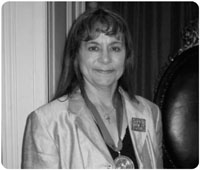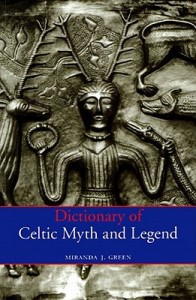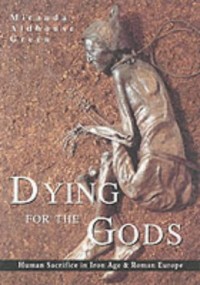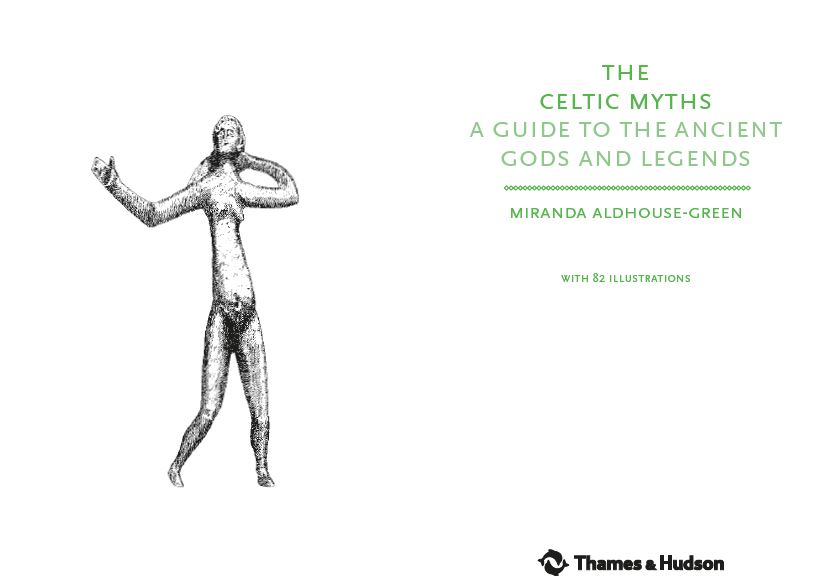 Miranda Aldhouse-Green is Professor Emeritus at Cardiff University. She specializes in the study of shamanism and archaeology of the Iron Age. She has published widely on the Celts and their world, including: Celtic Goddesses: Warriors, Virgins and Mothers, Dictionary of Celtic Myth and Legend, and Exploring the World of the Druids.
Miranda Aldhouse-Green is Professor Emeritus at Cardiff University. She specializes in the study of shamanism and archaeology of the Iron Age. She has published widely on the Celts and their world, including: Celtic Goddesses: Warriors, Virgins and Mothers, Dictionary of Celtic Myth and Legend, and Exploring the World of the Druids.
Tell us about your latest book, The Celtic Myths.
 I was lucky enough to be approached by my favourite publisher, Thames and Hudson, to contribute The Celtic Myths, as part of a series on world mythology. The book invites readers to a wonderful journey into a fantastic world, based on ancient myths that were first written down in medieval times by Christian clerics, but which tap into much more ancient and wholly pagan beliefs transmitted by word of mouth. Readers are able to explore not only the medieval mythic texts (that were originally written in Latin, Irish and Welsh) in English but also archaeological material, some of it dating as far back as the 8th century BC. The Celtic myths abound in magical creatures, talking beasts, shape-shifters, sacred landscapes, god-like kings, king-like gods and the powerful Druids who straddle the world of humans and deities. They meet fearsome triple battle-goddesses, superhuman heroes, divine warrior-queens, decapitated heads that can still speak and cauldron that choose whether or not to cook food, depending on who's asking! Above all, readers come face-to-face with an earth-world constantly encroached upon by spirits from the Otherworld, who take pleasure in meddling with human affairs, provoking wars and making and breaking monarchs and wreaking devastation on communities and their lands.
I was lucky enough to be approached by my favourite publisher, Thames and Hudson, to contribute The Celtic Myths, as part of a series on world mythology. The book invites readers to a wonderful journey into a fantastic world, based on ancient myths that were first written down in medieval times by Christian clerics, but which tap into much more ancient and wholly pagan beliefs transmitted by word of mouth. Readers are able to explore not only the medieval mythic texts (that were originally written in Latin, Irish and Welsh) in English but also archaeological material, some of it dating as far back as the 8th century BC. The Celtic myths abound in magical creatures, talking beasts, shape-shifters, sacred landscapes, god-like kings, king-like gods and the powerful Druids who straddle the world of humans and deities. They meet fearsome triple battle-goddesses, superhuman heroes, divine warrior-queens, decapitated heads that can still speak and cauldron that choose whether or not to cook food, depending on who's asking! Above all, readers come face-to-face with an earth-world constantly encroached upon by spirits from the Otherworld, who take pleasure in meddling with human affairs, provoking wars and making and breaking monarchs and wreaking devastation on communities and their lands.
What interests you most about the ancient Celtic world? I think it is the combination of fantasy and gritty realism. Celtic gods inhabit a divine world, parallel to that of people, but they are just as capricious and wilful as human beings. But above all, it is the sheer joy of imaginative storytelling that grips me. Where else could we meet hideous Underworld goddesses who wear beards and have one eye, one leg and one arm, and who strike terror into any person who encounters them? Where else could we encounter Druids whose satirical poetry was so powerful that it could literally sand-blast the face of the one to whom such verse was directed?
What are the challenges in putting all the research and this book together? It is a matter of presenting a balance between different kinds of evidence – the literary and the archaeological. Both are valuable but each has its limitations and it is all too easy to take each piece of evidence at face value, without delving beneath the surface to try and understand exactly what it means. After all, we are dealing with a long-vanished world, whose inhabitants and their chroniclers are beyond our reach so that we cannot question them. Ancient belief-systems are terribly hard to understand, and it is inevitable that I, like all scholars on the subject, impose some of my own background and cultural context upon the myths of these past societies.
What makes your book different? My hope is that I have managed to make a complex tangle of stories and ancient beliefs accessible to a wide readership. My aim from the start was to write in such a way that anyone interested, from co-scholar to someone unfamiliar with the subject can pick up the book and instantly be drawn into the wondrous array of stories therein. I wanted to make this book multi-layered, so that it can be appreciated on a range of levels, from a straightforward appreciation of a fabulous tale to the more complex subtleties involved in recreating ancient cosmologies.
What is the most important thing that has happened to you as a writer? The opportunities that came with winning a major prize, the John Legonna Celtic Research Prize (awarded by the National Library of Wales), which gave me the wherewithal to travel widely in France, Germany and Switzerland to study Celtic religious artefacts. This research has built the platform from which all my books have sprung.
Tells us about your experience of writing books. How did it all start for you, and what kind of writer are you now? It began with a book commissioned by the publisher Alan Sutton, called The Gods of the Celts, which I published in 1986. Since then, I have been incredibly lucky in gaining commissions from a range of prestigious publishing houses, including Thames & Hudson, Routledge (Taylor and Francis) and Yale. Commissions are so good for a writer's confidence because they represent a publisher's willingness to invest in (and risk a gamble on) a writer's ability to deliver a successful and saleable script. Since the 1980s, I have changed so much as a writer, becoming ever more confident in my ability not just as a scholar but as a creative writer. The ability to combine the two is a huge privilege, and I owe my present publisher (T&H) a huge debt of gratitude to encouraging the creative aspect of my work.
Where does your upcoming book going to take your readers next? I have just completed a new book for Thames and Hudson, to be published this autumn, based on an archaeological investigation of ancient human remains. I have two new ideas churning around in my brain: one involves a book on cultural interaction between Britons and Romans in the early days of the Roman conquest; the other is an archaeology of the Underworld.
The Celtic Myths by Miranda Aldhouse-Green is published by Thames & Hudson at £12.95.
Read the first page here:
The Celtic Myths Description:
The Celtic Myths is accessible for readers new to Celtic mythology, but satisfyingly detailed in its analysis of contexts, cultures and archaeology for those well versed in the stories.
Written down in medieval Wales and Ireland, the legends derive from oral poetry composed many centuries earlier. The Celts who shared these myths left behind treasures and monuments that predate the written texts but are closely connected with them. Miranda Aldhouse-Green skilfully weaves together evidence from manuscripts, artefacts and inscriptions to explore the world of the Celts and their mythology.
You will meet the supernatural cast of Celtic lore: the Irish warrior, Cú Chulainn, whose prodigious strength as a child foreshadowed his heroic life; the Welsh lovers Culhwch and Olwen whose long and happy marriage was won only by Culhwch’s Herculean feats; the tragic Lleu who was betrayed by his wife and lover; and King Arthur and his knights’ quest for the Holy Grail.
First discussing how myths are transmitted, the book recounts the Irish and Welsh myths and their key actors and motifs, before considering themes such as heroes, animals, women, environment and the Otherworld. In the Finale, Miranda Aldhouse-Green asks how the myths survived the Christianization of Europe and looks at the influence of monastic chroniclers on the tales, which they preserved and adapted.











